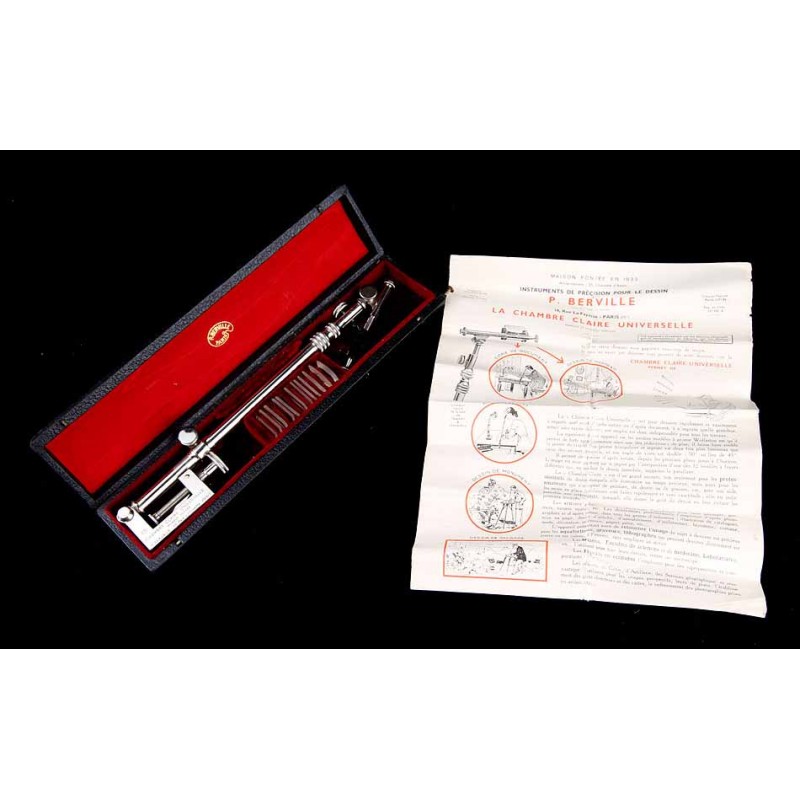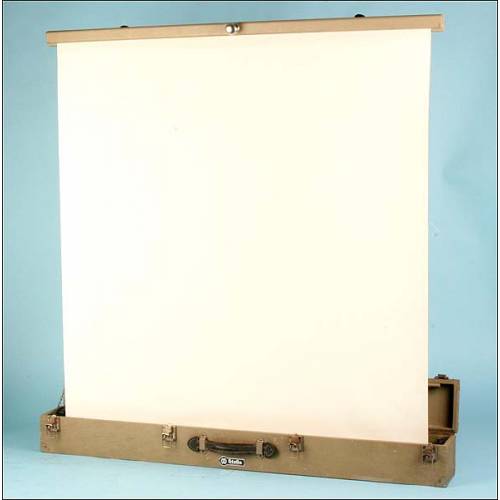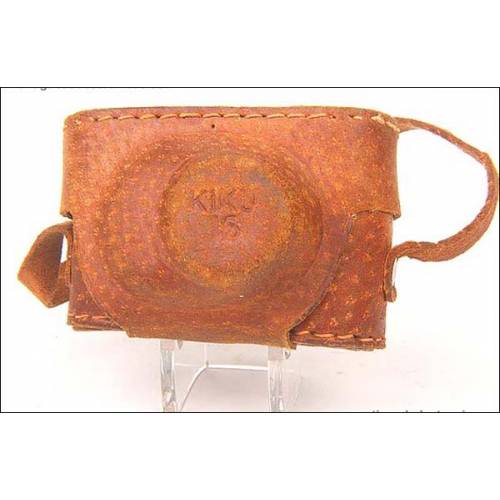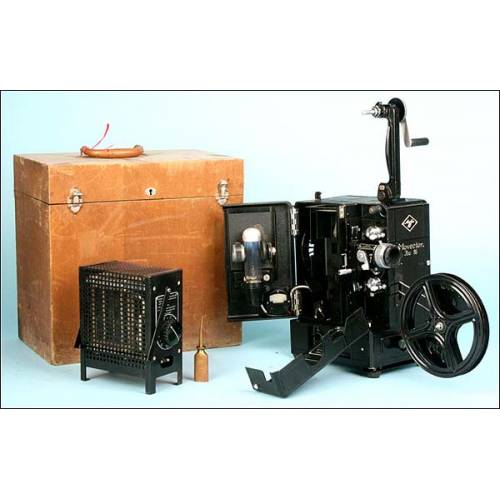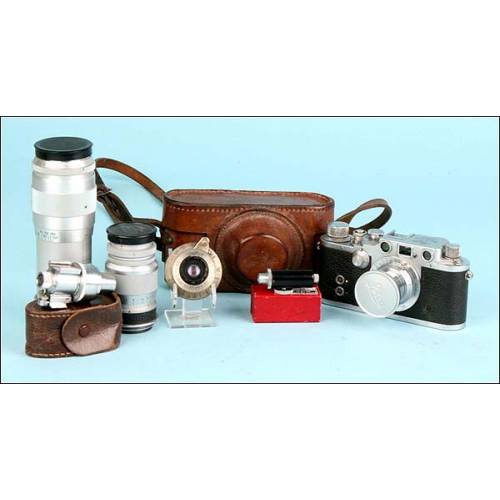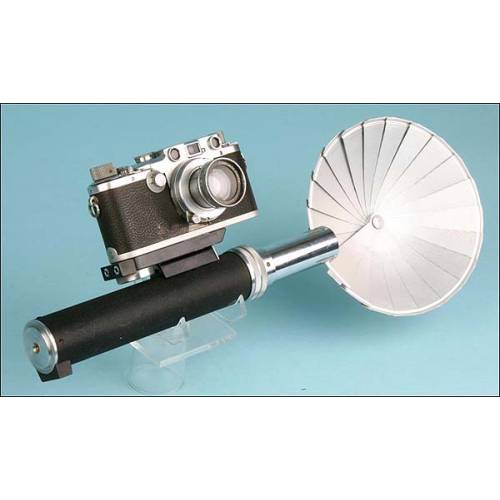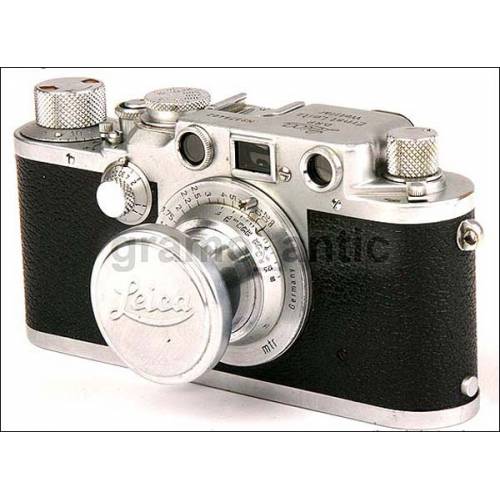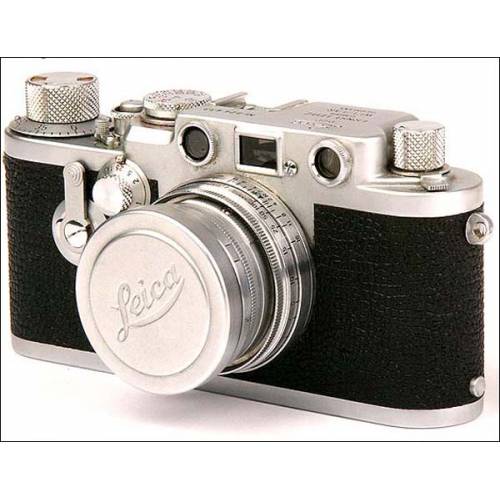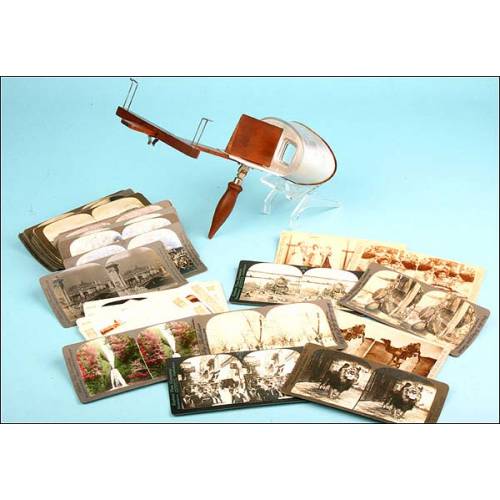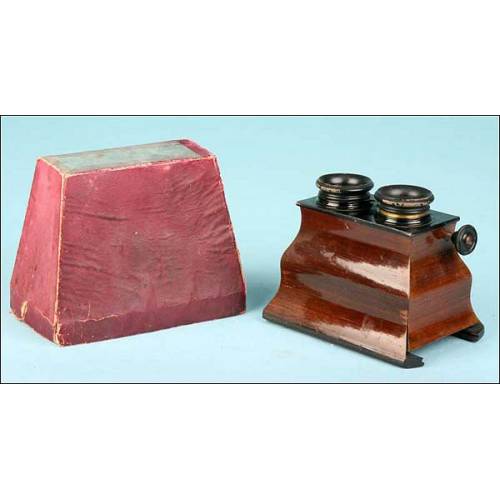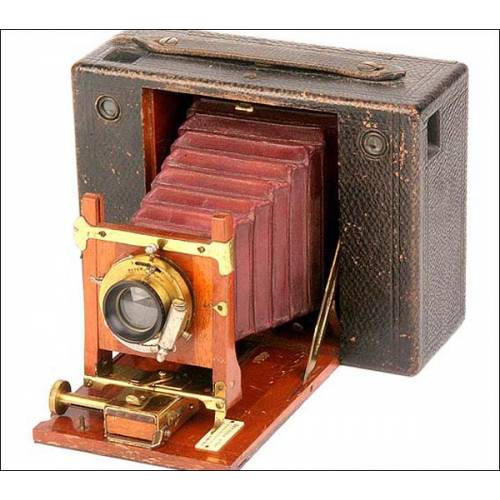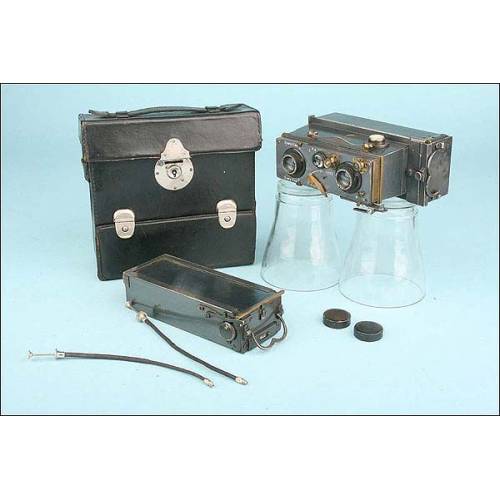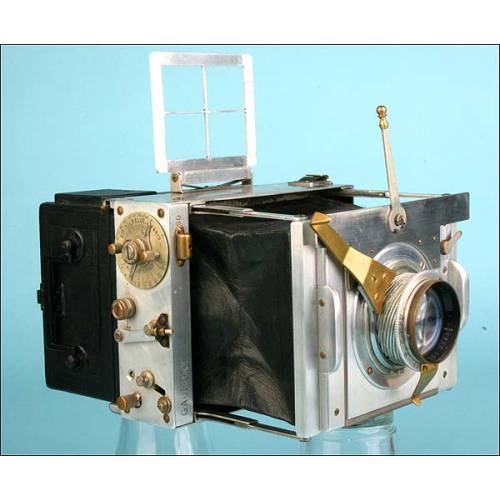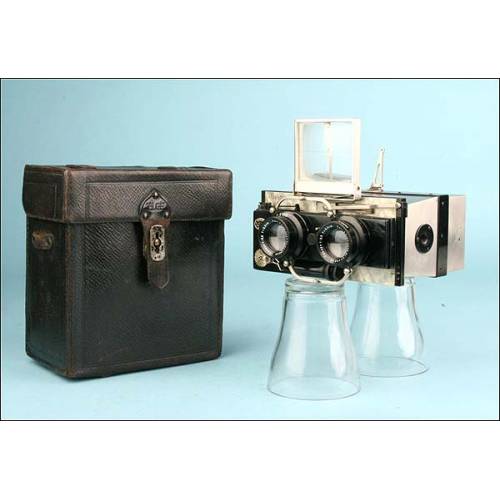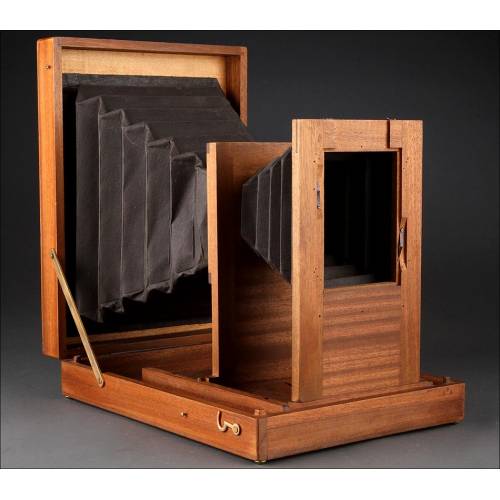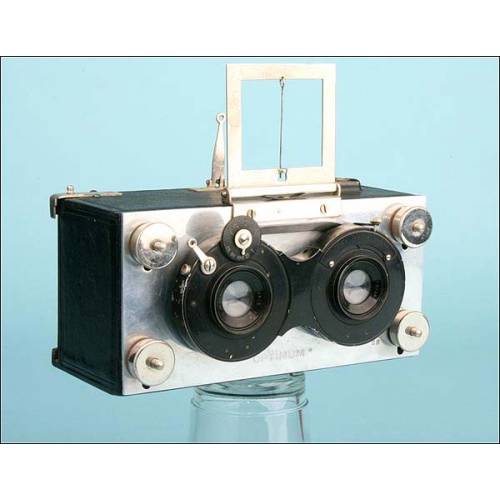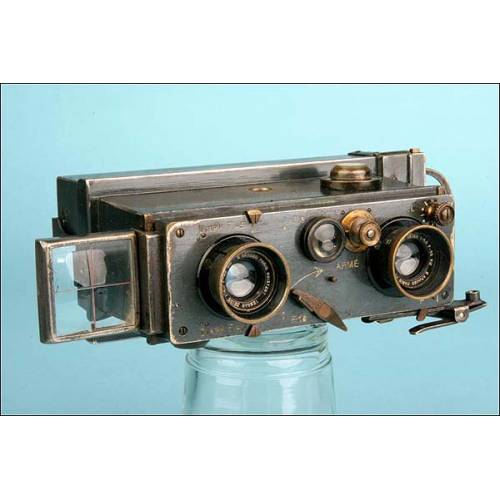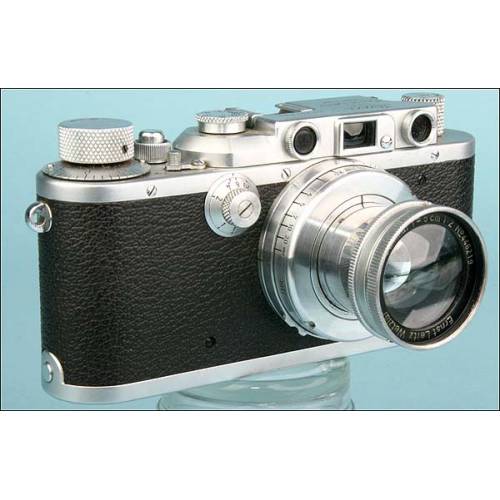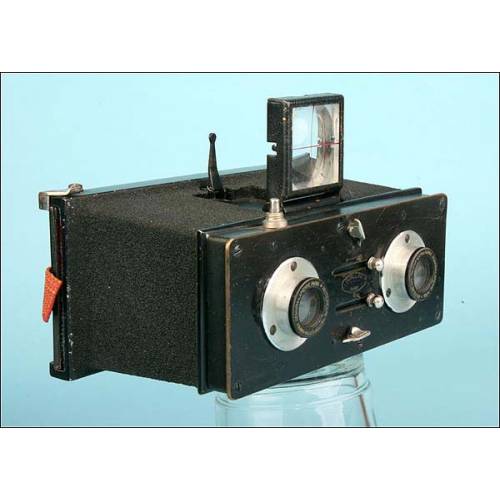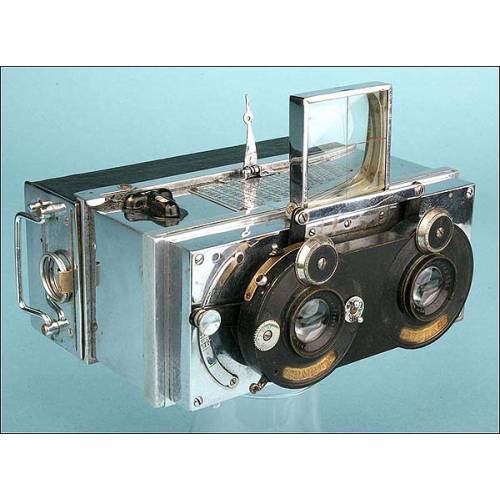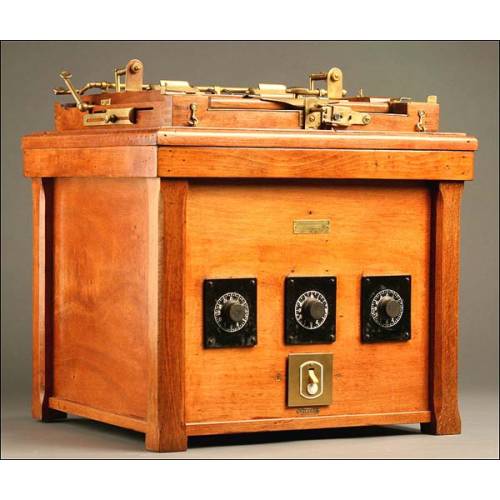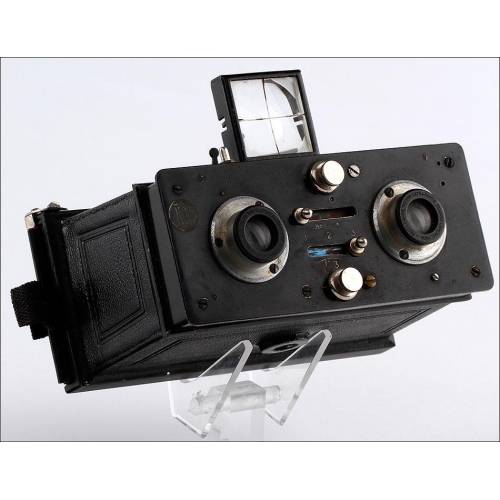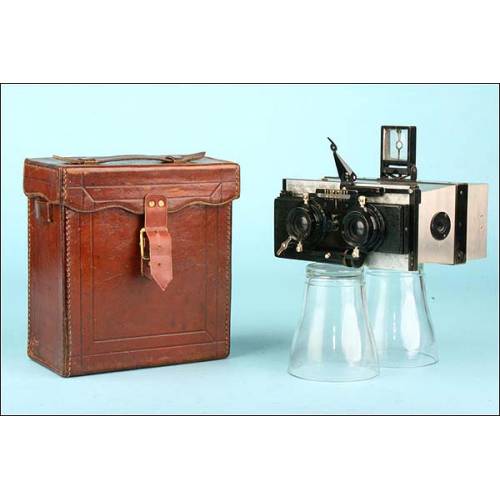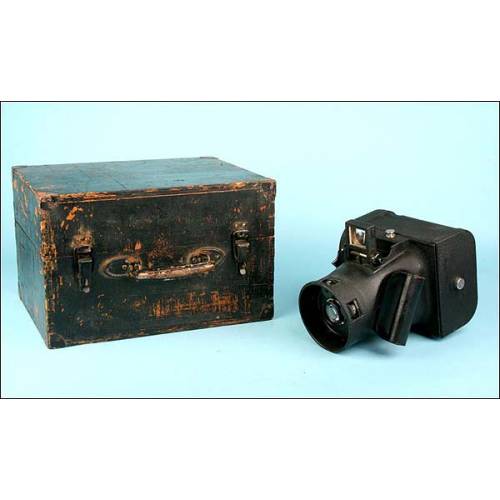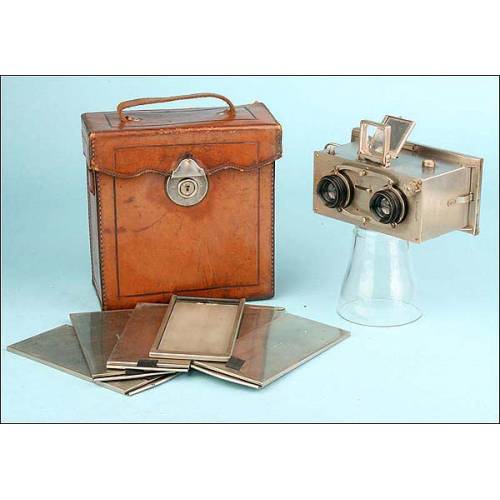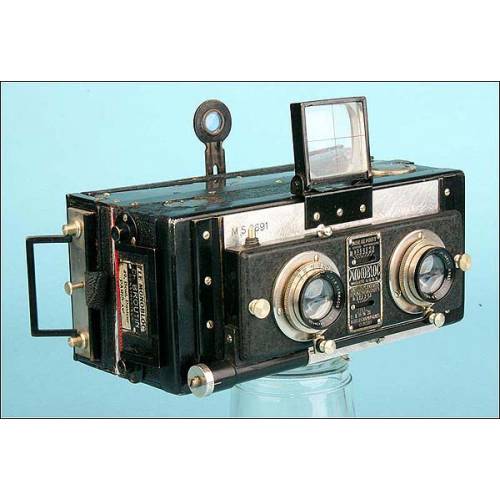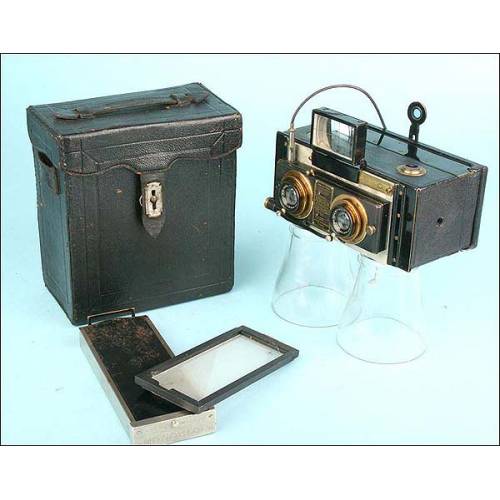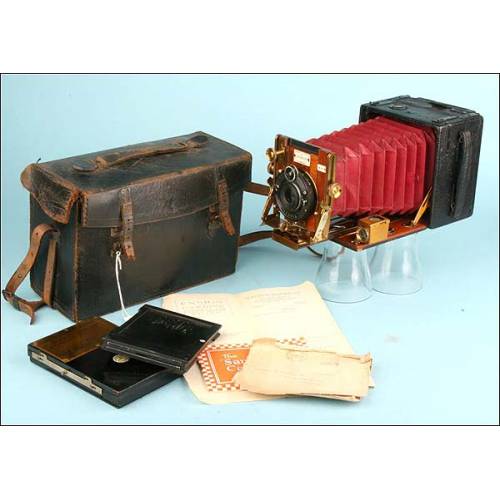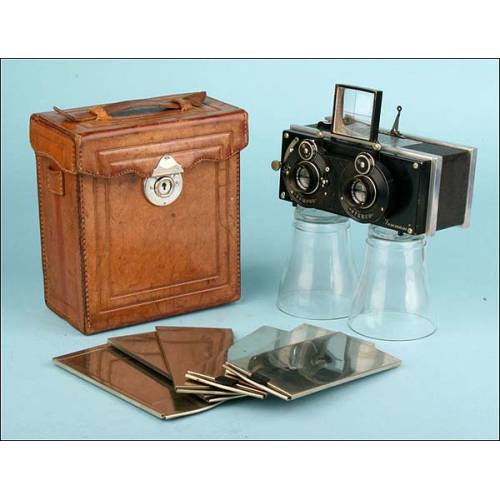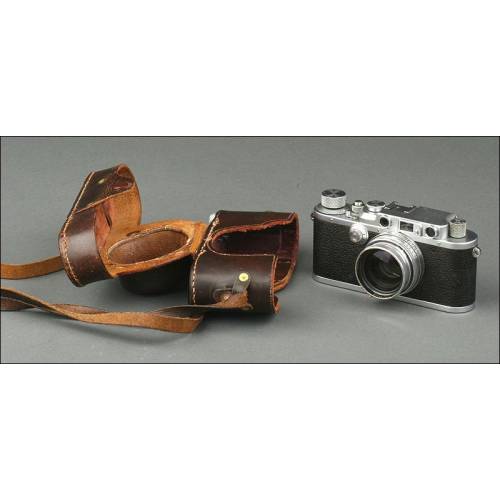B-870
Magnificent antique camera lucida. P. Berville. 1920
Magnificent antique camera lucida, complete and in its original case. Manufactured at the beginning of the 20th century.
Sold!
This curious article is a chromed-metal camera lucida made in Paris by P. Berville in the early 20th century (circa 1920). This instrument helps the user to reproduce images from nature, drawing them directly on the paper. These objects became quite popular in the turn of the century and were used by prestigious artists as Jean-Auguste-Dominique Ingres. This camera lucide is in amazing condition; it is composed of an articulated arm made up by two mobile parts, with a clamp at the bottom and a lens system at the top. In order to use it, the artist must secure the clamp at the edge of the table and focus the lens to the object to be portrayed while he or she looks through the viewer. This Wikipedia link shows an example of use: https://en.wikipedia.org/wiki/File:Camera_Lucida_in_use_drawing_small_figurine.jpg. The camera lucida that we can see in the images comes in its original case with an instruction leaflet in French, wonderfully preserved. Both the camera and the storing case are signed by P. Berville Paris, who was considered the most prolific and popular maker in his time. The case also contains an original lens set, complete and in perfect condition. Nostalgic and curious enough, this antique French camera lucida can still provide the most inquiring artists with great pleasure moments. Measurements (Case): Width: 11 in / 28 cm. Depth: 2.3 in / 6 cm.Camera lucida history The camera lucida was invented in the 19th century. It is a device to reproduce objects from nature while keeping the exact proportions in the drawing. It was described by Johannes Kepler in his work Dioptrica (1611), but there is no evidence of any of his contemporaries constructing a working camera lucida. The first one was designed and made by William H. Wollaston in 1807; Wollaston also gave it its definite name (camera lucida, meaning light room as a contraposition of camera obscura, dark room). During the 19th and early-20th century, cameras lucidas were quite popular. In 1833, the photographic pioneer William Fox Talbot tried to reproduce objects from nature using a camera lucida, but he was quite disappointed and decided to seek a means to "cause these natural images to imprint themselves durably". Today these devices are still produced, though they are not widely used.

